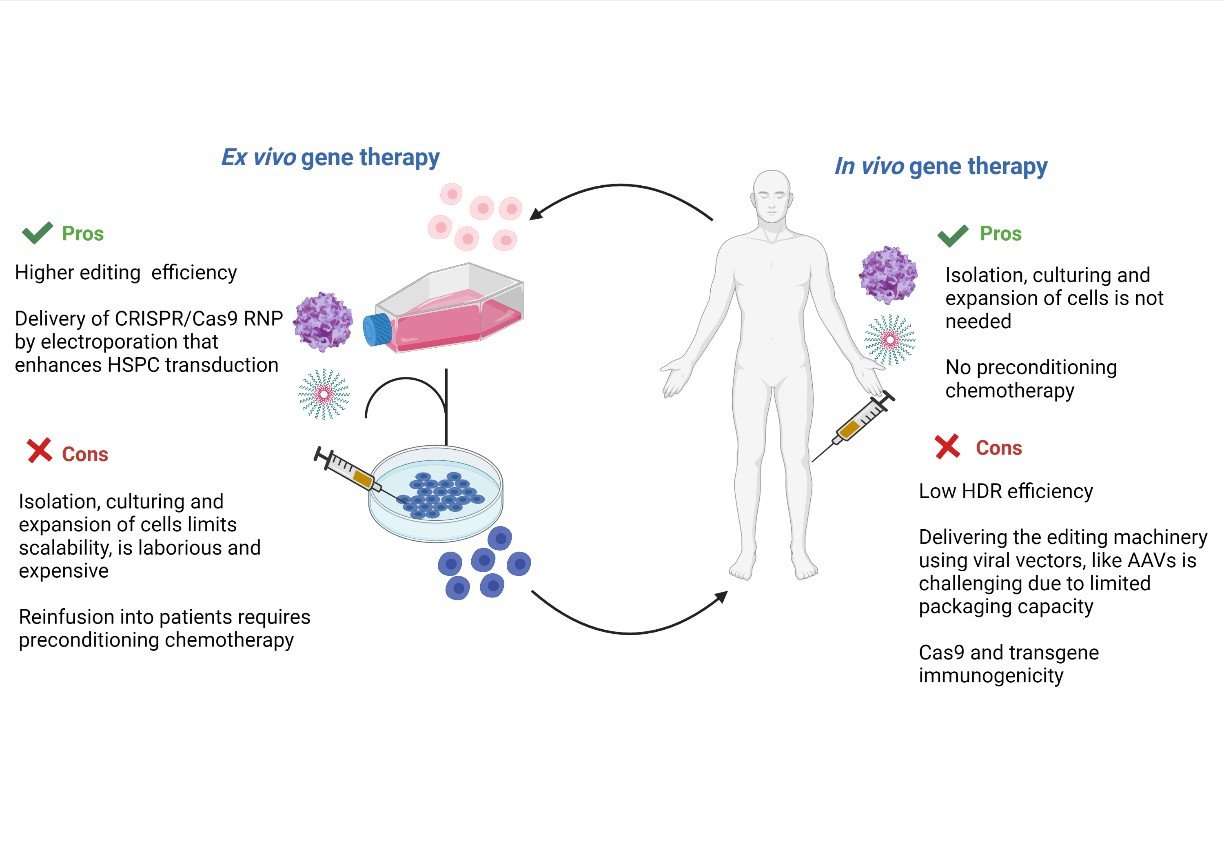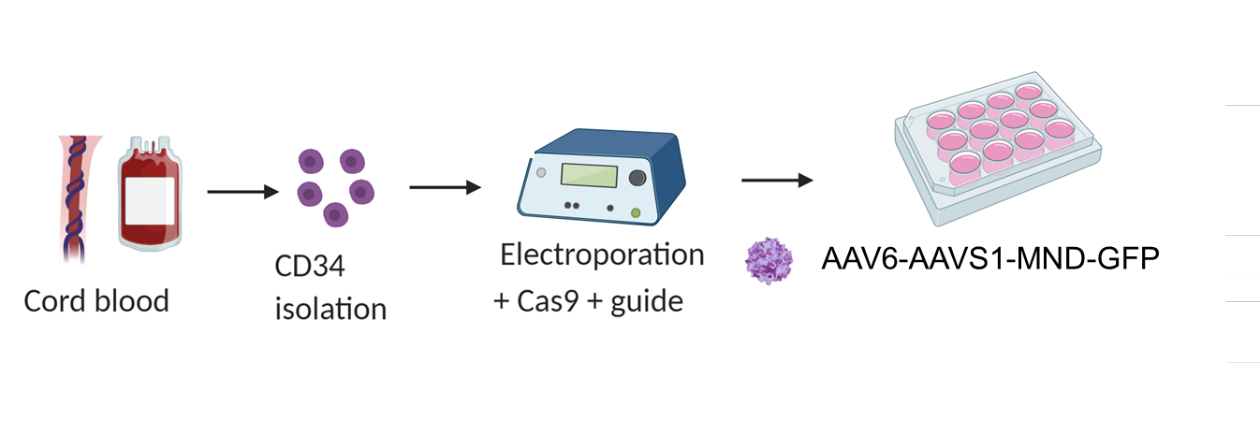Gene Editing of HSPCs
The “What, Why and How” of our HSPC Gene Editing
What?
We are interested in precise gene editing of hematopoietic stem and progenitor cells (HSPCs) and immune cells.
Why HSPCs?
The bone marrow contains multiple hematopoietic cell lineages. These bone marrow derived stem cells are multipotent, therefore any modification in them can be extended down different lineages, thus making them an attractive target for gene therapy.
How?
We use the CRISPR/Cas9 technology to edit the HSPCs and immune cells, primarily T cells. CRISPR/Cas9 is a robust gene editing tool that enables scientists to add, delete, or modify genes at targeted genomic locations by inducing a double stranded break (DSB) in the desired genomic locus. The Cas9-mediated DSB can then be repaired by either non homologous end joining (NHEJ) or homology directed repair (HDR) pathway. We are focused on the HDR mediated precise gene editing.
Gene editing approaches can be ex vivo or in vivo. Ex vivo editing entails modifying the cells in vitro and reinfusing them into the patient, whereas in vivo approaches involves direct modification of the cells in situ. We started by first optimizing conditions for ex vivo editing of HSPCs. Our preliminary data showed encouraging results. Learning from our ex vivo approach, we are currently working on editing HSPCs in vivo.

Ex vivo editing of HSCs:
To edit HSCs ex vivo, we isolate CD34s HSCs from cord blood, electroporate them with gRNA that targets AAVS1 genomic safe harbor and Cas9 and immediately transduce them with our HDR donor.

AAVS1-MND GFP

24 Hours 72 Hours 144 Hours
Humanized mouse model:
To study the in vivo differentiation of the HSCs, we generated a humanized mouse model showing human cell engraftment in the peripheral blood as well as multilineage distribution of different hematopoietic lineages in the bone marrow and spleen. This model will be very useful for our in vivo gene editing studies.
This model is easy to generate as the mice strain, we use do not require prior irradiation for human cell reconstitution, has a high survival rate and has good proportion of human B cells, T cells, erythrocytes, myeloid cells, NK cells etc. Thus, it can be applied to test a variety of human-specific constructs in vivo.
Please contact us if you are interested in using this model!

We are currently working on designing editing reagents and strategies for in vivo editing with the objective of establishing a platform technology that enables safe delivery of the editing machinery and can be used to treat a multitude of genetic diseases, like hematological disorders, immunological and infectious diseases.
